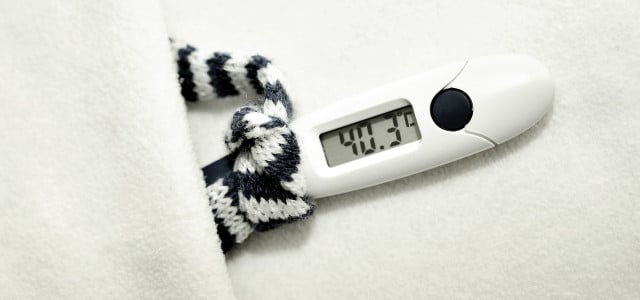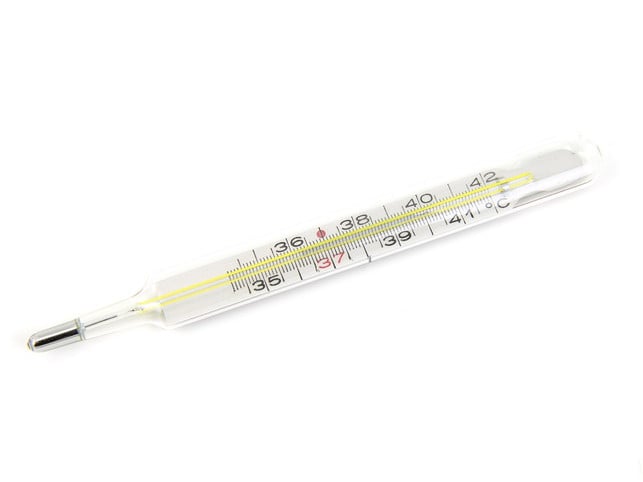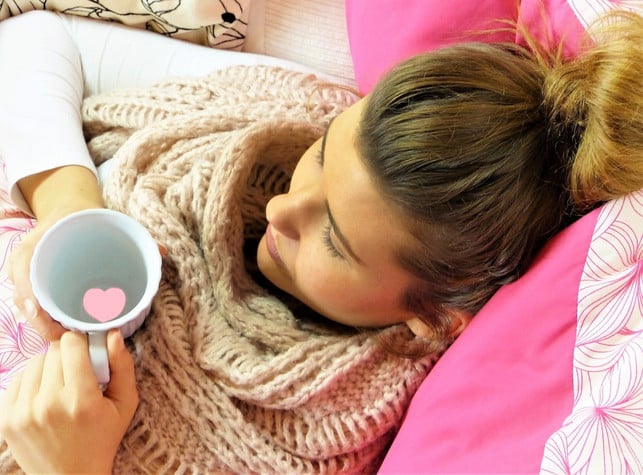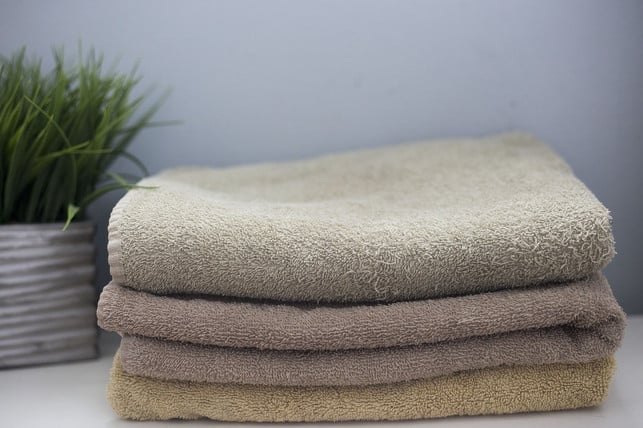
Wading wraps are a popular home remedy for fever. We explain to you which temperature is optimal for calf wraps and what else you should pay attention to.
Calf wraps are a tried and tested home remedy and can be a natural alternative to medication for fever. In order not to endanger the circulation, however, you should take some things into account. In principle, fever supports the body in combating pathogens and does not have to be reduced or treated in every case. If you are unsure, you should catch up with medical advice.
How do calf wraps work?
Calf wrap causes an evaporation cold through the cool water. The high body temperature caused by the fever is lowered and adjusted. The lower legs are cooled by a calf wrap and the body loses heat.
The cold also activates the vegetative nervous system. The metabolism is stimulated, the low blood pressure increases. If you let the wraps until they have heated up at body temperature, they can have a calming effect on the vegetative nervous system. The calf wraps are then sleep -promoting and anti -inflammatory.
You can find more tips in our guide “Sinking fever: home remedies for increased temperature”.
Wading wraps in babies

(Photo: CC0 / Pixabay / Publicdomainpictures)
You should not use calf wraps for babies under six months because they put too much strain on the circulation. From six months you can use calf wraps to lower the fever, but only if the baby has warm legs. If you feel unsure, get medical advice. So you can clarify the causes of the fever and assess whether calf wraps are suitable for your baby.
So you create calf wraps at the baby:
- Cutting around five centimeters wide stripes out of a cotton cloth.
- Dive the fabric strips in lukewarm (not cold!) Water and wrote them out.
- Wrap her around the baby’s calves. Let the joints free.
- Fix the calf wrap with baby socks, the foot part of which you cut off beforehand. So you can’t slip.
- Renew the calf wraps after about twenty minutes and repeat this process once or twice.
- If the fever does not fall significantly, you can create new calf wraps after about two hours.
Alternatively, you can put on the baby wet socks. To do this, the legs and feet must also be warm so as not to strain the circulation. In addition, the foot part of the socks should be dry. Simply immerse the upper part a little too large socks in lukewarm water, wrote it out and then roam it over the feet and the calves. Pull a few dry socks over it and remove the damp socks after about 10 to 15 minutes.
Another circulatory possibility for fever in babies are pulse wraps. You can already apply this to infants:
- Cut out four thin strips from a cotton cloth.
- Dive half of the fabric strips in lukewarm water and wrote them.
- Wrap the baby’s wrists with the damp part of the towels and then wrap the dry part.
- Fix the pulse wraps with a cloth or pulse warmers.
- You can repeat the process up to three times. Change the pulse wraps after 10 minutes each.
If the fever does not fall, you can create new pulse wraps after about three hours. In the meantime, watch the baby regularly.
Attention: Do not use calf wraps in these cases!

(Photo: CC0 / Pixabay / Silviarita)
In the following cases you should not use calf wraps against fever:
- In the case of cold hands or feet, you must not use calf wraps in principle, as they burden the cycle too much.
- You should also do without calf wraps for chills, acute urinary tract infections such as bladder infection and arterial circulatory disorders.
- In addition, you should basically lose weight as soon as you feel uncomfortable.
What temperature should calf wraps have?
So that calf wraps can have their effect, you should have the right temperature. This is based on who the wraps are used. In adults, the winders are likely to be colder than with small children and babies.
- In babies and toddlers, the water temperature should be lukewarm and a maximum of one to two degrees below the body temperature.
- The temperature difference may be larger in adults. It is best to use 16 to 20 degrees warm water.
Create calf wrap in adults

(Photo: CC0 / Pixabay / Malasiaphotos)
Cover a total of six fabric towels. Two towels each serve as the interior wipes that are placed directly on the calves. The interior wipes should be so big that they fit between the knee and ankle.
- Immerse yourself in lukewarm water and swing the interior wipes.
- Wrap a cloth around every calf. The towels should sit tightly to develop their effect, but do not cut in. Let the joints free.
- Put a larger cloth over the interior wipes. It should be made of cotton to absorb excess liquid.
- Then wrap the outdoor towels (for example towels from terry) around the calves. Alternatively, you can simply infer the outer towels.
- Change the calf wraps as soon as they are body warm. In the beginning it happens quite quickly.
- Repeat the process up to three times. At the second round you can use the wraps between 10 and 15 minutes, for the third round up to half an hour.
Note: The exact time information is not scientifically proven and are based on experience. Accordingly, you can vary the times according to your own condition. Listen to your body and, if in doubt, rather leave the wraps shorter on the skin for a few minutes.
If the calf wraps are used, remain at least half an hour so as not to overload your circulation. If you freeze or feel more uncomfortable than in front of the winding, you should take the calf wraps immediately.
Tip: By strengthening your immune system, you can in many cases prevent infections and fever, even with your children. From healthy drinks to movement in the fresh air to alternating showers – simple changes in your lifestyle can do a lot and ensure that infections are less violent or that you are not even infected.
Read more on utopia.de:
- Inhaling with salt water in the event of a cold and cough: This is how it works
- Wicker bark: home remedies for fever, pain and other symptoms
- Flu: these are the symptoms and as long as it takes
Revised by Jennifer Watzek
** marked with ** or orange underlined Links to sources of supply are partially partner links: If you buy here, you will actively support Techzle\.com, because we will then receive a small part of the sales proceeds. More information.